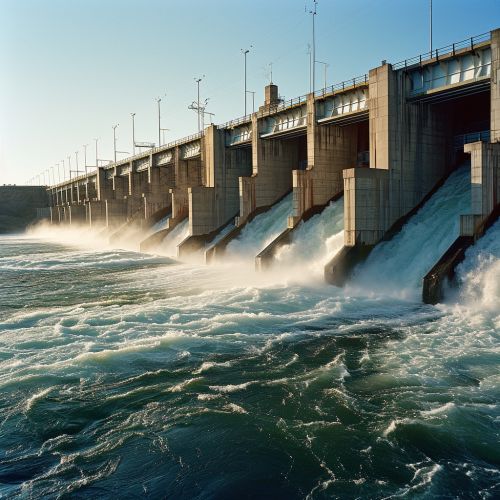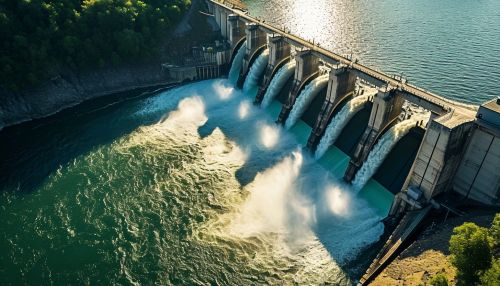Hydraulic Engineering
Overview
Hydraulic engineering is a sub-discipline of civil engineering that primarily focuses on the flow and conveyance of fluids, principally water. This area of engineering is intimately related to the design of bridges, dams, channels, canals, and levees, and to both sanitary and environmental engineering.
Hydraulic engineering is the application of the principles of fluid mechanics to problems dealing with the collection, storage, control, transport, regulation, measurement, and use of water. Before beginning a hydraulic engineering project, one must figure out how much water is involved. The hydraulic engineer is concerned with the transport of sediment by the river, the erosion of river banks, and the changing of the river bed during the flow. Fundamentally, hydraulic engineering is all about the movement and control of water.


History
The history of hydraulic engineering spans millennia, from ancient times to the present day. The ancient civilizations of Mesopotamia, Egypt, and the Indus Valley were all examples of cultures that applied hydraulic engineering principles to construct canals and irrigation systems.
In ancient Greece, hydraulic engineering was utilized in the creation of aqueducts to provide water for cities and agricultural irrigation. The Romans further developed this practice, and their aqueducts stand as a testament to their engineering skills.
During the Middle Ages, hydraulic engineering was often associated with the construction of mills and similar structures. In the modern era, hydraulic engineering has been closely associated with the rise of industrialization, particularly in relation to the use of hydraulic power in machinery and industry.
Principles of Hydraulic Engineering
Hydraulic engineering is based on the principles of fluid mechanics, which is the study of fluids and the forces on them. Fluid mechanics can be divided into fluid statics, the study of fluids at rest; and fluid dynamics, the study of the effect of forces on fluid motion.
Fluid Statics
Fluid statics or hydrostatics is the branch of fluid mechanics that studies fluids at rest. It encompasses the study of conditions under which fluids are at rest in stable equilibrium. The use of fluid statics is seen in the design of dams, storage tanks and other structures that deal with fluids.
Fluid Dynamics
Fluid dynamics is a sub-discipline of fluid mechanics that deals with fluid flow—the science of liquids and gases in motion. This area of fluid mechanics is often associated with the design of pumps, turbines, and structures such as dams and channels that deal with fluid flow.
Applications of Hydraulic Engineering
Hydraulic engineering is applied in many areas of civil engineering. These include, but are not limited to, the design and management of water resources, coastal and ocean engineering, and environmental engineering.
Water Resources
In the field of water resources, hydraulic engineers design and manage structures and facilities that deal with the collection, storage, control, transport, regulation, measurement, and use of water. These may include dams, reservoirs, canals, pipelines, and water treatment facilities.
Coastal and Ocean Engineering
In coastal and ocean engineering, hydraulic engineers deal with the design and construction of harbors, marinas, and coastal defenses. They also work on the design of offshore structures and the study of wave behavior and coastal processes.
Environmental Engineering
In environmental engineering, hydraulic engineers apply their knowledge to solve problems related to water quality and water treatment. They design systems for wastewater treatment, stormwater management, and the remediation of contaminated sites.
Future of Hydraulic Engineering
The future of hydraulic engineering is closely tied to the challenges posed by climate change, population growth, and the need for sustainable development. As the world grapples with these issues, the demand for innovative and sustainable hydraulic engineering solutions is expected to grow.
Hydraulic engineers will play a critical role in designing and implementing solutions to manage water resources, protect coastlines, and improve water quality. They will also be at the forefront of developing new technologies and approaches to deal with the impacts of climate change, such as sea-level rise and increased frequency and intensity of storms.
